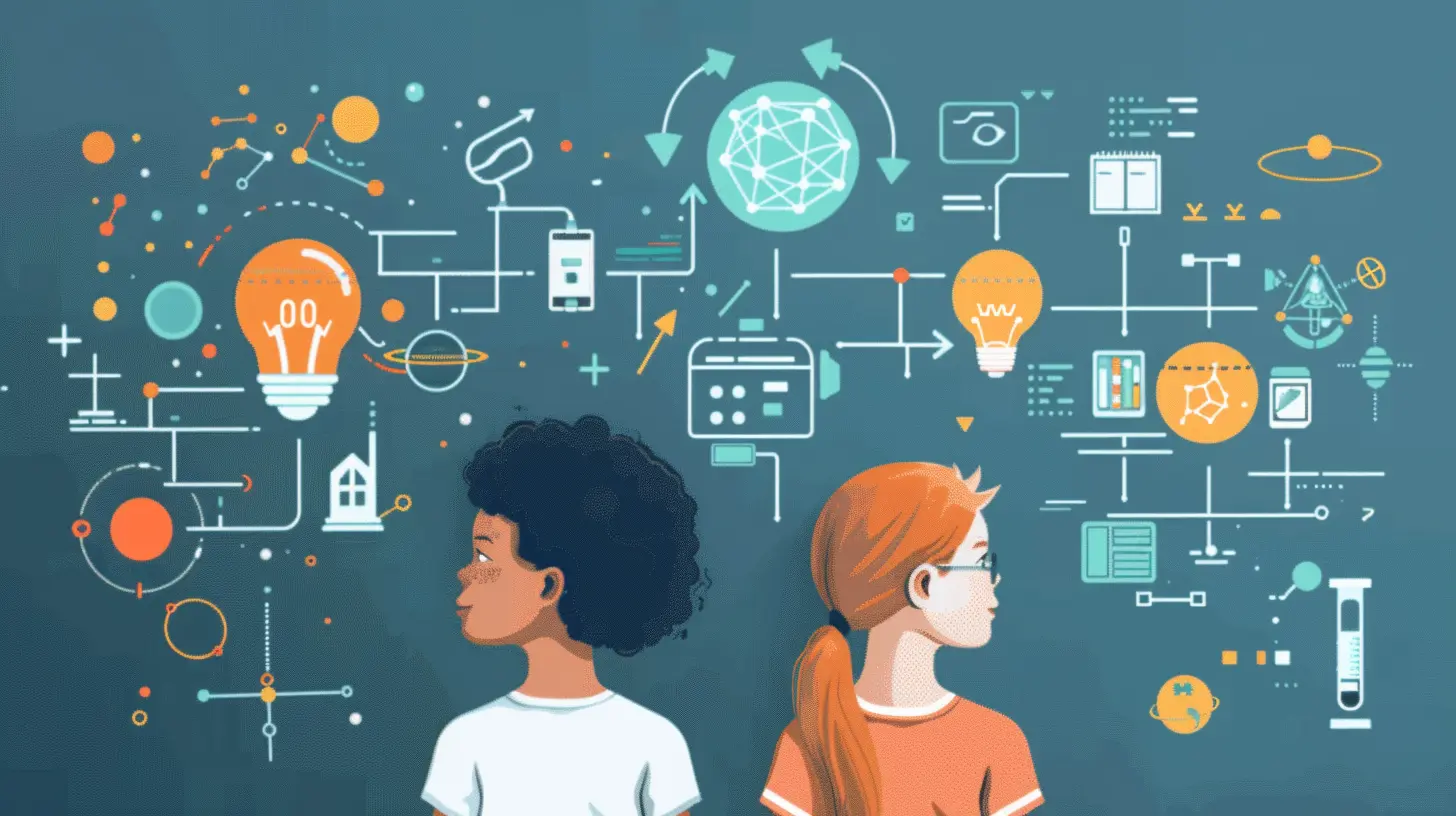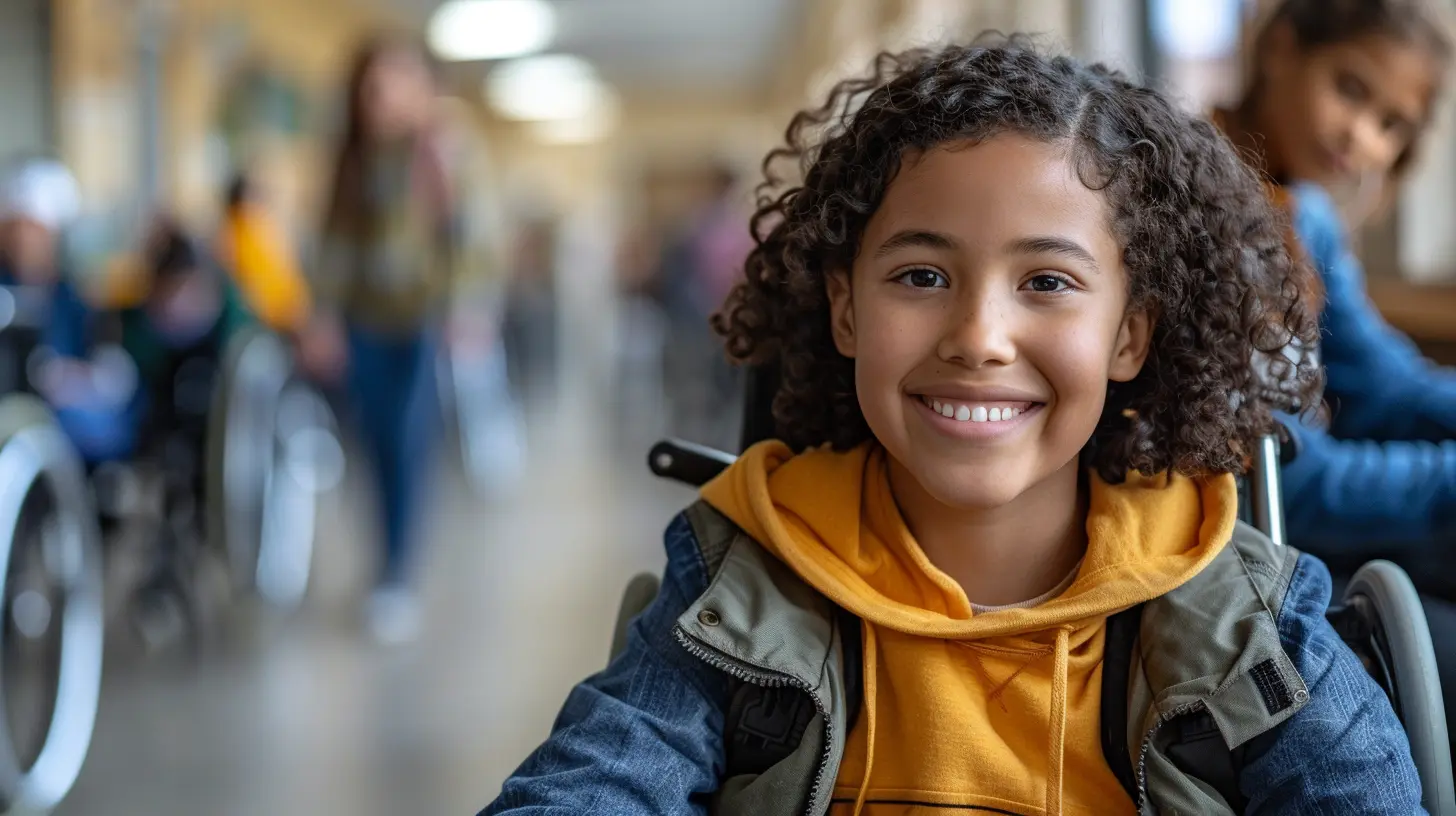How Assistive Technologies are Supporting Students with Disabilities
18 June 2025
When we think about education, we often picture classrooms filled with eager learners, chalkboards (or smartboards), textbooks, and passionate teachers. But what we might overlook are the unique challenges faced by students with disabilities—and more importantly, the incredible tools that are helping them overcome those challenges. That’s where assistive technologies come in. These innovative tools are literally opening doors and tearing down walls for millions of students around the globe.
Let’s dive into how assistive technologies are not just changing education for students with disabilities—they're totally transforming it.
What Exactly Is Assistive Technology?
First things first—what do we even mean by "assistive technology"?In simple terms, it's any device, software, or equipment that helps people with disabilities do things that might otherwise be difficult or impossible. In education, that translates to tech that supports learning, communication, movement, and even social interactions.
Think of it like a bridge. Assistive tech isn’t about giving students an unfair advantage. It’s about leveling the playing field so everyone gets to the other side together. Fair and square.
Why It Matters More Than Ever
Imagine trying to participate in a group discussion when you're unable to speak, or reading a textbook when you're visually impaired. Frustrating, right?Over 15% of the world’s population lives with some form of disability. That’s roughly 1 in every 7 people. In classrooms, this means millions of students facing physical, cognitive, or sensory barriers that can make learning a real uphill battle.
Assistive technologies break down those barriers and give students the chance to shine in ways they never thought possible. They help boost confidence, foster independence, and open up opportunities for every learner to thrive.
Types of Assistive Technologies Rocking the Education Scene
Now let’s look at some of the tools that are making a real difference. Get ready—this stuff is pretty cool.1. Text-to-Speech (TTS) Software
Ever heard your computer read something out loud? That’s TTS in action.For students with dyslexia or visual impairments, reading can be tough. But with text-to-speech, they can listen to textbooks, articles, even their own writing. It’s like having a personal audiobook, anytime they need it.
Not only does this help with reading comprehension, but it also makes learning way more engaging.
2. Speech-to-Text Tools
On the flip side, what if writing was the challenge?Speech-to-text tools let students speak into a microphone while the software converts their speech into written words. It's great for students with physical disabilities, learning differences, or difficulties with fine motor skills.
This tech turns their thoughts into essays, stories, or class notes—without the struggle of typing or writing by hand.
3. Augmentative and Alternative Communication (AAC) Devices
For students who can’t speak or have speech impairments, AAC devices are life-changing. These tools include simple picture boards or high-tech voice-output communication devices (like tablets with special apps).They help students express themselves, answer questions, and participate in class discussions. Basically, students find their voice—even if it's through a screen.
4. Screen Readers
Screen readers are like digital narrators for students who are blind or visually impaired. They read the content of the screen aloud, letting students navigate websites, access digital textbooks, and more.It’s more than a reader—it’s a gateway to independence.
5. Braille Technology
Braille's been around for centuries, but now it’s gone digital. Refreshable Braille displays, Braille note-takers, and even Braille e-readers make it easier for students to read and write in Braille without the bulk of traditional books.These tools expand what’s possible, not just in literacy but across every subject area.
6. Mobility and Accessibility Tools
Mobility aids, like modified keyboards, trackballs, or even eye-tracking systems, allow students with physical disabilities to use computers and access content just like everyone else.Sometimes, the smallest tweak in how they interact with a device makes the biggest difference.
7. Organizational Software
Let’s face it—school can be chaotic. Calendars, assignments, projects, due dates... phew!For students with ADHD or other executive functioning challenges, apps like planners, timers, and reminder tools help keep things on track. These tools turn stress into structure.
8. Educational Apps with Inclusive Design
Some apps are crafted with everyone in mind. These platforms allow learners to control the pace, use subtitles, change fonts, or even include assistive support right within the app.When learning tools are inclusive by design, everyone wins.
How Schools Are Adapting to This New Tech Wave
It’s one thing to have amazing tech. But are schools actually using it?The good news—many are stepping up big time.
More schools are investing in dedicated Assistive Tech Specialists who work alongside students, parents, and teachers to find the right tools. Teachers are getting trained, support plans are becoming more personalized, and classroom environments are shifting towards true inclusivity.
Sure, there's still work to do, but the progress? It's inspiring.
Real Stories, Real Impact
It’s one thing to talk about how great this tech is. But real-life stories show just how powerful it can be.Take Mia, for example—a high school student with cerebral palsy. Writing was painfully slow for her until she got a simple adaptive keyboard. Now? She’s a budding novelist working on her second book.
Or Ethan, a third-grader with non-verbal autism. Using an AAC app on his iPad, he went from struggling to share his needs to leading show-and-tell in class.
These aren’t just success stories. They’re reminders that every student has potential—sometimes, they just need the right key to unlock it.
The Role of Parents and Educators
Here’s the truth: technology is only as powerful as the support around it.Parents, teachers, and support staff play a crucial role in making assistive tech work. They’re the ones encouraging students, learning the tools themselves, and advocating for what each child needs.
Making assistive technology effective is a team effort. When everyone’s on board, the impact multiplies.
Challenges Still Standing in the Way
Of course, it’s not all smooth sailing.Some schools don’t have the budget or resources to provide the latest tools. Others may lack proper training or simply aren't aware of what’s out there. And then there’s the issue of stigma—students may feel “different” using special devices.
But here’s the thing: awareness is growing. More organizations and governments are recognizing the importance of assistive tech and pushing for better access, better funding, and better inclusion.
We’re not there yet—but we’re getting closer every day.
The Future Looks Bright (and Inclusive)
Technology never stops evolving, and neither does assistive tech.We’re seeing AI-driven learning tools, smart glasses, brain-computer interfaces, and even virtual reality platforms built specifically with inclusion in mind. The future of education is shaping up to be not only high-tech but highly human.
Because when we build schools that support every student—regardless of ability—we create communities where everyone succeeds.
Final Thoughts: It’s Bigger Than Just Tech
Let’s be real. Assistive technology isn’t just about gadgets. It’s about empowerment.It’s about giving all students the chance to learn, communicate, and dream—without limits. It’s about nurturing confidence, embracing diversity, and recognizing that intelligence comes in many forms.
So whether you're a parent, teacher, school leader, or just someone who cares—know that assistive technology isn’t a luxury. It’s a necessity. And when we use it thoughtfully, we give every student a fighting chance to reach their full potential.
Pretty amazing, right?
Thanks to assistive technology, the classroom of tomorrow is already here—and it’s one where everyone belongs.
all images in this post were generated using AI tools
Category:
Innovation In EducationAuthor:

Olivia Lewis
Discussion
rate this article
3 comments
Allegra Wilkerson
This article offers a fascinating glimpse into how assistive technologies are transforming education for students with disabilities. It's incredible to see the diverse tools and strategies that empower learners, fostering inclusivity and enhancing creativity. I'm eager to learn more about the innovative solutions emerging in this field!
June 23, 2025 at 2:25 AM

Olivia Lewis
Thank you for your thoughtful comment! I'm glad you found the article insightful—there are indeed many exciting developments in assistive technologies that are making a significant impact in education. Stay tuned for more updates!
George King
Great article! It's inspiring to see how assistive technologies are empowering students with disabilities, enhancing their learning experiences, and fostering a more inclusive educational environment. Thank you for sharing!
June 21, 2025 at 10:48 AM

Olivia Lewis
Thank you for your kind words! I'm glad you found the article inspiring and valuable.
Zevonis Anderson
What a fantastic insight! It's inspiring to see how assistive technologies are empowering students with disabilities, turning challenges into triumphs. A brighter, more inclusive future is on the horizon! Keep shining!
June 20, 2025 at 4:31 AM

Olivia Lewis
Thank you so much for your kind words! I'm thrilled to hear that you found the insights inspiring. Together, we can continue to promote inclusivity and empower all students!



